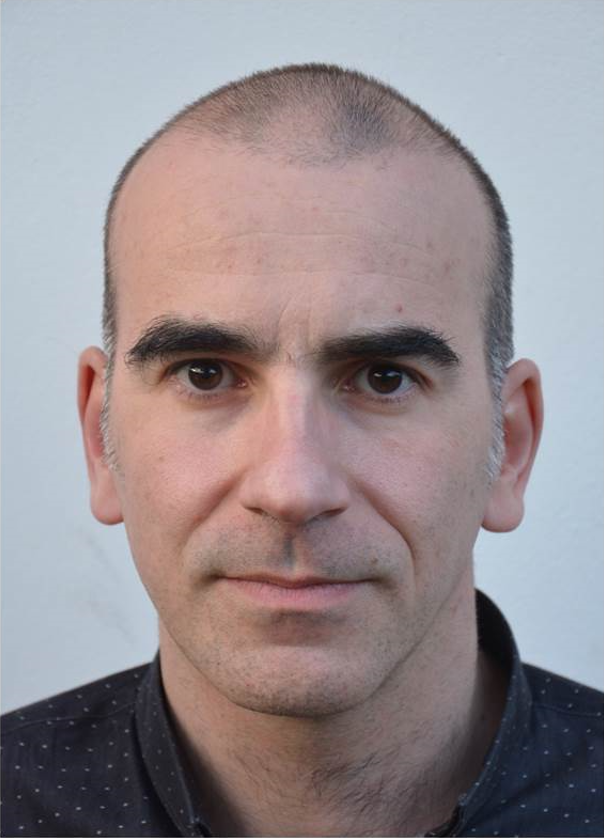
Lorenzo Rigutti
University of Rouen Normandie, France
A tale of ions and photons from nitrides and related systems
Lorenzo Rigutti joined the instrumentation team at GPM Rouen in 2012, after a PhD at the University of Bologna, Italy (2006) and a post-doc at the institute of Fundamental Electronics in Orsay, France. He is expert in semiconductor physics and characterization. His current research focuses on compositional metrology by Atom Probe Tomography (APT) and its correlation with optical spectroscopy. His recent studies have addressed individual APT specimens in sequence with micro-Photoluminescence (µPL), STEM and APT, demonstrating the possibility of measuring optical emission from field emission tips within an APT instrument. He has also demonstrated the Photonic Atom Probe, an instrument coupling APT and in-situ µPL.
Abstract
Since its introduction, Laser-Assisted Atom Probe (LaAPT), has been extensively applied to III-nitrides because of their technological relevence [1]. However, these systems present specific challenges for APT concerning the correct quantification of species, exhibiting a complex surface chemistry under high electric field [2], [3].
III-nitride APT samples may produce photoluminescence (PL) when excited by the APT laser pulse. This is at the base of a recently demonstrated instrument, the Photonic Atom Probe (PAP) [4], recently applied to different III-N heterostructures [5]. Such structures may be characterized by the presence of quantum confining systems, extended defects and diverse doping species. The PL spectra can be correlated with the 3D chemical information from APT [6], [7], [8]. This in-situ approach allows for original insights into the relationship between the optical emission properties and the chemical/structural properties of the analyzed specimens.
Besides the interest of this instrument as a microscope, the PAP opens up further possibilities for the study of field ion emission under high field and under laser illumination [9]. As an example, the PL spectral shift allows measuring the stress induced by the application of a strong electric field at the tip apex and its propagation through the specimen [10],[11].
References
[1] M. J. Galtrey et al., “Three-dimensional atom probe studies of an InxGa1−xN∕GaN multiple quantum well structure: Assessment of possible indium clustering,” Applied Physics Letters, vol. 90, no. 6, p. 061903, Feb. 2007, doi: 10.1063/1.2431573.[2] L. Mancini et al., “Composition of Wide Bandgap Semiconductor Materials and Nanostructures Measured by Atom Probe Tomography and Its Dependence on the Surface Electric Field,” J. Phys. Chem. C, vol. 118, no. 41, pp. 24136–24151, Oct. 2014, doi: 10.1021/jp5071264.
[3] E. Di Russo et al., “Composition Metrology of Ternary Semiconductor Alloys Analyzed by Atom Probe Tomography,” J. Phys. Chem. C, vol. 122, no. 29, pp. 16704–16714, Jul. 2018, doi: 10.1021/acs.jpcc.8b03223.
[4] J. Houard et al., “A photonic atom probe coupling 3D atomic scale analysis with in situ photoluminescence spectroscopy,” Review of Scientific Instruments, vol. 91, no. 8, p. 083704, Aug. 2020, doi: 10.1063/5.0012359.
[5] H. Turski et al., “Nitride LEDs and Lasers with Buried Tunnel Junctions,” ECS J. Solid State Sci. Technol., vol. 9, no. 1, p. 015018, Dec. 2019, doi: 10.1149/2.0412001JSS.
[6] E. Di Russo et al., “Super-resolution Optical Spectroscopy of Nanoscale Emitters within a Photonic Atom Probe,” Nano Lett., vol. 20, no. 12, pp. 8733–8738, Dec. 2020, doi: 10.1021/acs.nanolett.0c03584.
[7] I. Dimkou et al., “InGaN Quantum Dots Studied by Correlative Microscopy Techniques for Enhanced Light-Emitting Diodes,” ACS Appl. Nano Mater., vol. 3, no. 10, pp. 10133–10143, Oct. 2020, doi: 10.1021/acsanm.0c02106.
[8] E. Weikum et al., “Microscopic correlation of doping distribution and luminescence in a nitride laser junction by Photonic Atom Probe,” Phys. Rev. Mater., vol. 8, no. 7, p. 074603, Jul. 2024, doi: 10.1103/PhysRevMaterials.8.074603.
[9] E. Di Russo and L. Rigutti, “Correlative atom probe tomography and optical spectroscopy: An original gateway to materials science and nanoscale physics,” MRS Bulletin, vol. 47, no. 7, pp. 727–735, Jul. 2022, doi: 10.1557/s43577-022-00367-6.
[10] L. Rigutti et al., “Optical Contactless Measurement of Electric Field-Induced Tensile Stress in Diamond Nanoscale Needles,” Nano Lett., vol. 17, no. 12, pp. 7401–7409, Dec. 2017, doi: 10.1021/acs.nanolett.7b03222.
[11] P. Dalapati et al., “In Situ Spectroscopic Study of the Optomechanical Properties of Evaporating Field Ion Emitters,” Phys. Rev. Applied, vol. 15, no. 2, p. 024014, Feb. 2021, doi: 10.1103/PhysRevApplied.15.024014.
